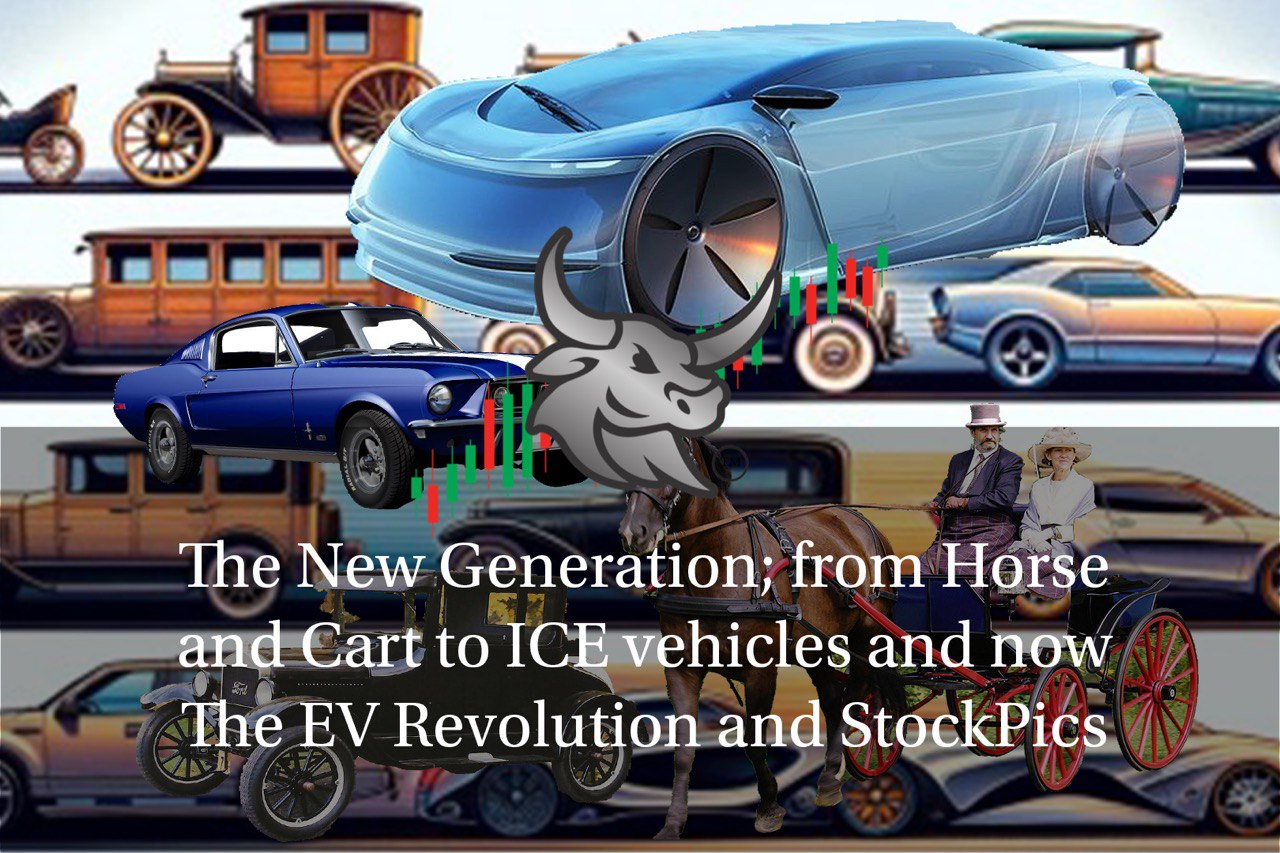5 of 6: A six (6) Article Series On The Evolution of the Automobile, From ICE to EV Powered Vehicles by 2035, The Transformation Years and Dependence on Lithium Powered Batteries!
Introduction: The global automobile industry is undergoing a seismic shift, driven by technological advancements and the rise of new economic powers. As we explore the future of this industry, it is crucial to understand how different regions are positioning themselves for dominance. In this article, we will delve into the rise of China as a powerhouse in the electric vehicle (EV) market, their strategic control over critical minerals, and the implications for the global economy.
Chapter 1: The Rise of China’s EV Industry China’s ambitious drive to lead the electric vehicle revolution is rapidly reshaping the global automotive landscape. Companies like BYD, CATL, Nio Auto, XPENG, and Li Auto are at the forefront of this transformation, pioneering advancements in EV technology and production.
- BYD and CATL: BYD, one of the world’s largest electric vehicle manufacturers, has been a key player in China’s EV market. CATL (Contemporary Amperex Technology Co. Limited), the leading battery manufacturer, has made significant strides in developing lithium iron phosphate (LFP) and lithium manganese iron phosphate (LFMP) batteries. These innovations have pushed the range of EVs beyond 1000 kilometers, addressing one of the major barriers to EV adoption: range anxiety (South China Morning Post) (Wikipedia).
- Nio Auto’s Battery Swap Technology: Nio Auto has introduced a revolutionary battery swap system, allowing drivers to quickly exchange depleted batteries for fully charged ones. This system not only reduces downtime for charging but also mitigates concerns about battery lifespan and reliability (South China Morning Post).
- XPENG and Li Auto: These companies are making significant inroads both domestically and internationally, with XPENG focusing on autonomous driving technology and Li Auto developing extended-range electric vehicles (South China Morning Post).

Call me for a free estimate in the Greater Montreal Area.
Chapter 2: Dominance in Lithium and Rare Earth Metals China’s edge in the EV market is further bolstered by its control over the supply of critical minerals, particularly lithium and rare earth metals.
- Ganfeng Lithium: As one of the world’s largest lithium producers, Ganfeng has secured strategic assets in countries like Argentina, Australia, and Mexico. This dominance in lithium production is crucial for maintaining a steady supply of batteries for EVs (Wikipedia).
- Zijin Mining Group: Zijin is another major player, with extensive operations in copper and lithium mining. The company’s global reach ensures a robust supply chain for the essential materials needed in battery production (South China Morning Post).
- Strategic Acquisitions: Chinese companies have been proactive in acquiring stakes in lithium mines worldwide, ensuring long-term access to these critical resources. This strategy mirrors the control the U.S. once held over global oil supplies, which underpinned the petro dollar system (South China Morning Post) (Wikipedia).
Chapter 3: Technological Advancements and Innovations The advancements in battery technology are setting new benchmarks for the industry.
- LFMP / LFP Batteries: Gotion, CATL and BYD’s breakthroughs in LFMP and LFP technologies are game-changers, offering longer ranges and enhanced safety. These batteries provide a more stable and reliable alternative to traditional lithium-ion batteries, reducing the risk of thermal runaway and fires (South China Morning Post) (Wikipedia) (CNEV).
- Solid-State Batteries: While still in the development phase, solid-state batteries promise even greater energy density and safety, potentially revolutionizing the EV market once they become commercially viable (South China Morning Post).
Chapter 4: Implications for the Global Market China’s rise in the EV sector poses significant challenges for the traditional automotive powerhouses in the U.S. and Europe.
- Economic Impact: As Chinese EV manufacturers expand their global footprint, they are reshaping market dynamics. The U.S. and European automakers must innovate and adapt to maintain their market share and economic influence (South China Morning Post).
- Geopolitical Shifts: Control over lithium and other critical minerals gives China a strategic advantage, similar to the U.S.’s historical dominance in oil. This shift has far-reaching implications for global trade and geopolitical relations (South China Morning Post) (Wikipedia).
Chapter 5: The argument that human activities are directly linked to global warming, particularly in the Northern Hemisphere, can be supported through several scientific observations and data analyses.

Firstly, the Northern Hemisphere has experienced significant warming due to its extensive landmass and high human population density. This region is warming faster than the Southern Hemisphere, largely due to anthropogenic activities such as industrialization, deforestation, and the widespread use of fossil fuels. Studies have shown that since the mid-19th century, the Northern Hemisphere has seen substantial increases in temperatures, which align closely with the rise in greenhouse gas emissions from human activities【MDPI】【climate central】.
The equator plays a crucial role in maintaining distinct climatic systems in the Northern and Southern Hemispheres. Atmospheric and oceanic circulations, such as the Intertropical Convergence Zone (ITCZ), act as barriers that limit the mixing of air masses between the hemispheres, contributing to the observed asymmetry in warming rates【climate central】. This separation is akin to how water spins in opposite directions in the two hemispheres due to the Coriolis effect, demonstrating how natural forces maintain distinct regional climates. The rotation of the earth in relation to this effect is due to the Coriolis effect.
Human impact is further evidenced by the correlation between carbon emissions and global temperature increases. The use of coal and petroleum as primary energy sources has led to a significant rise in atmospheric CO₂ levels, which enhance the greenhouse effect. This effect traps heat within the Earth’s atmosphere, leading to global temperature increases and climate changes【climate.gov】. The Northern Hemisphere, with its greater land area and higher industrial activity, contributes disproportionately to these emissions.
Deforestation, particularly in the Northern Hemisphere, exacerbates global warming by reducing the number of trees that can absorb CO₂. As forests are cut down for agriculture, urban development, and other uses, the carbon stored in trees is released back into the atmosphere, further contributing to the greenhouse effect【climate.gov】.
Moreover, the observed seasonal shifts, such as longer summers and shorter winters in the Northern Hemisphere, highlight the direct impact of global warming on regional climates. These changes disrupt ecosystems, lead to more frequent and severe heatwaves, and increase the risk of wildfires【WEF】.
In summary, human activities, especially in the densely populated and industrialized Northern Hemisphere, have significantly contributed to global warming. This is demonstrated by the faster rate of temperature increase in this region, the role of the equator in separating climatic systems, and the various ways in which human activities increase atmospheric CO₂ levels and enhance the greenhouse effect. These factors collectively illustrate the profound impact of human actions on global climate change【WEF】【MDPI】【climate.gov】【climate central】.
Conclusion: The Road Ahead The future of the automobile industry is being shaped by global warming, rapid technological advancements and strategic geopolitical moves. China’s dominance in the EV market and control over critical minerals position it as a formidable force in the global economy. As we move forward, the interplay between innovation, resource control, and geopolitical strategy will determine the new world order in the automotive industry.
Next in the Series: “The Future of Automotive Technology: Innovations Shaping the Next Decade” In the upcoming article, we will explore the cutting-edge technologies that will define the future of the automotive industry. From autonomous driving to advanced manufacturing techniques, we’ll examine how these innovations will transform transportation and the global economy. Join us as we navigate the exciting developments on the horizon.



